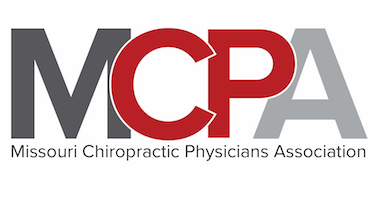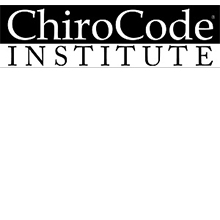2021 E/M Guidelines Take Effect
by Mario Fucinari DC, CIC, CPCO, CPPM
Since the initial evaluation and management (E/M) guidelines were released in 1995 and again in 1997, there has been controversy. The American Medical Association and the Centers for Medicare and Medicaid Services have joined together to arrive at a consensus that will reshape evaluation and management (E/M) guidelines for years to come.
In the outpatient evaluation and management codes' reorganization, the framers had a common goal; to reduce documentation and coding burden. The committees hope that the necessity for audits will be reduced by adding more detail to the CPT codes. The E/M coding will be consistent, thus decreasing ambiguity, errors, and needless future revisions.
The changes in evaluation and management guidelines for 2021 only apply to office or outpatient codes 99202 – 99215. The extent of the history and physical examination still needs to be medically appropriate. However, the amount of history or the number of elements examined and documented will not be a factor in determining the overall E/M level of service. The guidelines have left the clinical decision of the appropriate content of the history and examination in the physician or other qualified healthcare provider's hands. The service level's determination is now based on medical decision-making or the time involved in the evaluation elements.
The basis for code selection in the 2021 E/M guidelines is medical decision-making or the total time spent performing the service on the day of the encounter. The medical decision making and table of risk have been revised. The provider also can use MDM as the basis for the code selection or if time is a more relevant factor.
No matter if you decide to use time as a determining element or medical decision making, the medical necessity for what you do must be substantiated. It would be inappropriate if the patient reports a seemingly minor self-limiting problem, and you submit a level four examination (99204/99214). Likewise, it would be wrong to submit a detailed examination or spend 45 minutes on the consultation and examination and arrive at a diagnosis of cervicalgia or lumbalgia. A diagnosis of cervicalgia or lumbalgia is quite simply neck or back pain. There is no reasoning for the existence of the condition or its true etiology.
You may be asking yourself, when would it be preferable to use time as the key element, rather than the medical decision making? Time may be used in the instance when you wish to counsel or answer questions for the patient, parent, or authorized representative. The level of medical decision-making may not rise to a detailed examination level, but the time you took with the parent would justify the higher code. Use the time method of documentation judiciously because audits of the rationale for time and itemization may be required.
Say Goodbye to 99201
As of January 1, 2021, CPT code 99201, office or other outpatient visits for the evaluation and management of a new patient, was deleted. The deletion of 99201 is an official code deletion, which means it is no longer listed in the CPT Professional Code Book. There may be some situations in which you may still want to report 99201, such as those entities that will not immediately adopt the 2021 CPT code changes, such as worker's compensation insurance.
Changes in the "Face-to-Face" Requirement
Reimbursement by insurance carriers has diminished, causing us to take a new look at how efficiently we run the office. Medical doctors have increased the use of physician assistants and nurse practitioners. Physical therapists have increased the use of physical therapy assistants and rehabilitation technicians. In my opinion, chiropractic must also adapt. There is no getting around that we must do what we must to increase efficiency in the office. If professionally trained, the chiropractic assistants can be used very effectively to gather information for a consultation and as a scribe to aid the doctor in the documentation.
To this end, CMS and the AMA have changed the face-to-face requirement to include non-face-to-face time. Since the history and physical examination is not an element in selecting the office or other outpatient services code, the physician can use staff to collect information from the patient or authorized representative. The patient, parent, or their representative may also supply information directly through a portal or questionnaires. These documents would then be reviewed by the physician or other health care professional. If so, the provider must document that he or she reviewed the information.
Medical Decision making is based on the following factors:
- The number and complexity of problems addressed at the encounter.
- The amount and/or complexity of data to be reviewed and analyzed
- The risk of complications and/or morbidity and mortality of patient management
Social Determinants of Health (SDOH) and MDM
As health care providers, we know that there are factors that affect patient care, such as poverty, insurance coverage, family pressures, and work pressures. The AMA has created a whole new documentation and coding area that acknowledges the "diagnosis or treatment significantly limited by social determinants of health" is an example of a "moderate risk of morbidity from additional diagnostic testing or treatment." Finally, there is a mechanism to record these barriers to quality health care. More information is available in my publication, "E/M Guidelines 2021 For the Chiropractic Office," available at www.Askamrio.com
Documentation When TIME is the Key Element
The 2021 evaluation and management guidelines have changed, making time or medical decision making an element to determine the CPT code level. The AMA guidelines no longer refer to "typical time spent." The time calculations are for the actual time spent.
When utilizing time as the factor for E/M code selection, non-face-to-face time may be combined with the face-to-face time with a physician if applicable. The time spent with the patient is never to include clerical staff time, only qualified clinical staff, such as a physician's assistant or nurse practitioner.
For example, the time the physician spends reading over the documentation provided by the staff, patient, or caregiver may be combined with other services performed by the physician such as in the examination, ordering tests, or conferring with other practitioners.
Whenever time is utilized as the factor in evaluation and management code selection, you will use the total time for the encounter on the day of the encounter. For example, if you are performing consultation, examination, and x-rays of a patient on the same day, the face-to-face time and non-face-to-face time would be summed together to arrive at the total time. The time utilized to take the x-ray by the physician or qualified personnel and the time it takes to interpret and analyze the radiograph would not be counted in the total time since the radiology CPT code separately reports it.
Total time spent on the day of the encounter may include:
- Reviewing tests in preparation of a patient visit.
- Obtaining and/or reviewing a separately obtained history.
- Performing a medically appropriate examination and/or evaluation.
- Counseling and educating the patient, family, and/or caregiver.
- Ordering medications, nutritional therapy, tests, and/or procedures.
- Referring and communicating with other healthcare professionals, when not separately reported.
- Documenting in the health record. (look for clarification in the future on this subject)
- Independently interpreting tests not separately reported with other CPT codes.
- Communicating results of tests not separately reported with other CPT codes.
- Coordination of care not separately reported with other CPT codes.
Total Time Calculation Table
| Code Level | Time Range (Minutes) |
| 99201 | Code Deleted |
| 99202 | 15 – 29 |
| 99203 | 30 – 44 |
| 99204 | 45 – 59 |
| 99205 | 60 - 74 |
| 99211 | Time Removed |
| 99212 | 10 – 19 |
| 99213 | 20 – 29 |
| 99214 | 30 – 39 |
| 99215 | 40 - 54 |
I hope this will guide you in an overview of integrating the 2021 E/M guidelines in your office. It will be a work in progress. Just merely learning the guidelines will not thoroughly prepare you for the application of the guidelines in real life. There are several resources to help you through this process, including the manual "E/M 2021 Guidelines For the Chiropractic Office," available at www.askmario.com
Dr. Mario Fucinari is a Certified Insurance Consultant, Certified Professional Compliance Officer, and a member of the Medicare Carrier Advisory Committee. Dr. Fucinari is also on the speaker's bureau for ChiroHealthUSA, NCMIC, and Foot Levelers. Contact Dr. Fucinari for classes on Medicare, E/M documentation, examination, or rehabilitation training. If you wish to have him speak for your group, you can contact him or one of the speaker's bureau for availability and class content. For further information, you may email him at [email protected] or check his website at www.Askmario.com













